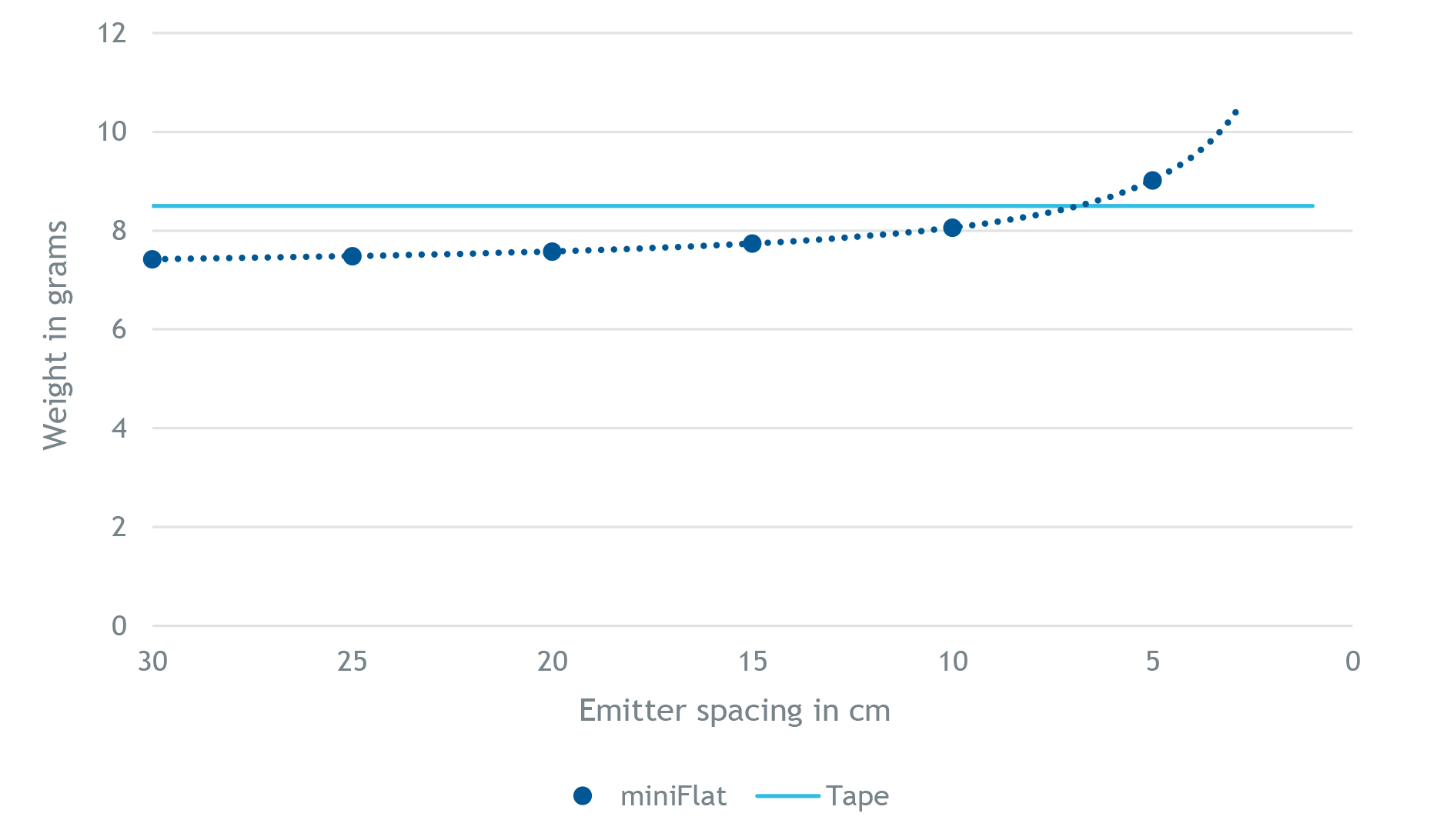

Users of micro-drip irrigation for seasonal crops look towards the most economical thin wall laterals available. Two types fall into this category – continuous tape and miniFlat drippers. With the latest innovations on our PIL 032-miniFT//Explore extrusion lines, miniFlat is competitive with dripper spacing of 10 cm and above.
A miniFlat dripper (emitter) is qualified by its size and the volume of plastic employed. Indeed, the miniFlat is roughly 50% smaller in size compared to the classic micro-drip emitter. The advantage of less plastic is essential when compared with tape.
Another consideration is the drip spacing capability. The tape product can be thought of as a continuous emitter strip with pools spaced at regular intervals, usually about 10 cm (4"). It is then a multiple of pool spacing that determines drip locations and where holes can be made. As a result, drip distance for tape cannot be anything but a multiple of emitter pool spacing (e.g. 4", 8", 12", etc.). On the other hand, MiniFlat offers a full range of emitter spacing possibilities, from 10 cm and above.
With tape, the strip is continuous and without interruption along the lateral's entire length. The amount of plastic is independent to the drip locations. To the contrary, miniFlat's use of plastic is variable, and is dependent to the drip locations. A larger space between emitter points means less plastic required per meter.
The two criteria of emitter volume and spacing combine to determine the material required according to product type. Knowing the volume of plastic required between emitter points, indicates how well miniFlat and tape products match up.
The graph above shows where the lines cross. We weighed both types of thin-wall laterals having a 16 mm diameter. The tape had a constant weight of 8.5 grams/meter, independent of the hole spacing. On the other hand, a miniFlat sample counted 7.1 grams/meter without the emitters. Each inserted emitter increases the weight by 0.096 grams. The graph below shows the convergence point for an emitter spacing at 7 cm. This means that at 7 cm and above, miniFlat laterals will weigh less than a comparable tape product. Note that commonly used laterals have drip location spreads that never fall below 10 cm.
Production flexibility plays a role too. When making a product change that specifies a different drip flow rate, setups prove simpler on a miniFlat extrusion line. Indeed, production continues by feeding in a new batch of emitters. With tape, a labyrinth strip is formed continuously by rotomolding before the extrusion head. A product change means tooling setups, which are time consuming. But finally, it is the frequency of planned product changes that is determinant for producers. The more product changes one has, the more setup times have to be considered and the more miniFlat becomes advantageous.
MiniFlat shows its competiveness both in terms of plastics consumed and in frequent product changes. Consider our PIL 032-miniFT//Explore when looking to produce the most economical thin wall laterals available.
Yves Zweifel
R&D Manager and Process Leader, Irrigation
yves.zweifel@maillefer.net
Topics: Irrigation
What a challenge! How to keep micro-drip irrigation drippers all lined-up perfectly and in pace with our high extrusion line speeds? Maintaining an ...
Read moreSeveral criteria condition the type of micro-drip pipe to produce, like market situation, its readiness to adopt a modern irrigation technique, crop ...
Read more